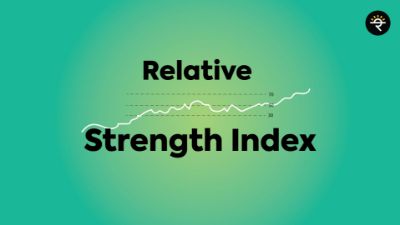The day before yesterday, I went to my friend’s house for her daughter’s birthday party. Although such a memorable day, she seemed nervous. On asking her she said that she faced some losses in the stock market. After a detailed conversation, I got to know that she had not done a fundamental analysis of the stocks she invested in. This made me realize that many people fail to fundamentally analyze a stock before investing. But do people know the exact meaning of “Fundamental Analysis”? So, if you are also in the same boat as her, then stay tuned till the end of this blog.
What is Fundamental Analysis?
Fundamental Analysis is the study of a business, its financial statements, its peers, its strengths and weaknesses, and the industry and economy the business operates in. This study enables an investor to arrive at an intrinsic value (or fair value) of that company and to form an opinion about the future growth of the company. But what is intrinsic value and why is it calculated? The intrinsic value is what a stock (or any asset, for that matter) is actually worth. The intrinsic value calculated using fundamental analysis is compared with the current market price of the security to know whether the security is undervalued or overvalued. E.g.: - A particular stock has an intrinsic value of Rs.100, but the market price of the stock is Rs.150, then the stock is overvalued, and buying the stock may not be a good decision as all the future growth of the business is already factored into the current price. At this point, you would be eager to know about what is involved in Fundamental Analysis. But first, let us understand why is it so important?
Why Fundamental Analysis is important?
Fundamental analysis involves the study of everything from generic factors like the state of the economy and industry conditions to specific factors like the effectiveness of the company’s management. Is it important to carry out this fundamental analysis and compute the intrinsic value? Of course, YAAS! If my friend would have invested in fundamentally strong stocks, then she would have been happy on her daughter’s birthday. Fundamental analysis helps an investor to identify whether a stock is worth investing in or not. It helps an investor to frame his/her own view rather than acting on random tips. So, based on Fundamental Analysis, if an investor considers a stock's worth to be more than what it is currently trading at, then he may purchase the stock.
Who should learn Fundamental Analysis?
Whether you are from a finance background, or you are an artist, an engineer, or a sportsman, or from any other field, and are motivated to increase your wealth, then investing in the stock market can help you. But the investments can also work in the opposite direction if not analyzed properly and this is where learning Fundamental Analysis is useful. Fundamental Analysis helps us identify an inherently strong and sound company. Hence, everyone should learn fundamental analysis and perform fundamental analysis before making any investment decision. Warren Buffett, the world’s most successful investor, is also a promoter of fundamental analysis.
Approaches to Fundamental Analysis.
Till now, we have discussed the meaning of Fundamental Analysis. But, a very important question “How to do Fundamental Analysis?” is still unanswered. Well, there are two approaches to it. The Top-down approach and the Bottom-up approach. An investor can follow any of the two approaches. Let’s understand them one by one.As the name suggests, the Top-down approach begins with the study of the overall economy followed by industry analysis and ends with the study of the selected stock. The economic analysis involves the study of inflation, interest rates, GDP growth which helps to determine the overall health of the economy. The investor then identifies the industries and sectors by studying the growth trends of the industry and understanding industry cycles. Finally, the most promising stocks, within the identified industry are selected for further analysis to make an informed decision. Stocks are analyzed based on company-specific metrics such as revenue, profit, earnings, the dividend declared, the integrity of the management personnel, etc. Now, you might wonder about where to find all this data? Don't worry! The data relating to the economy is published in the newspapers as and when released by the government. For studying industry trends websites like ibef.org can be valuable and the company-related data is available in the annual report, which is easily accessible on the company’s website.
Alternatively, an investor can use the Bottom-up approach, which is exactly the opposite of the top-down approach. It starts with the analysis of the company, followed by industry and economy analysis. This approach lays more emphasis on the company rather than the industry and the economy. So, what can be the reason behind starting the analysis from the company? The rationale behind this approach is the belief that individual stocks may perform better than the overall industry or the economy. Such belief is built when you are attracted to the company’s innovative business model, strategies, a financial position that is not in line with the industry trend, etc. The metrics studied under both approaches however remain the same. I hope that you have got a basic introduction to Fundamental Analysis. Now, have a look at this video to understand the exact crux of Fundamental Analysis and cement everything you have read in this blog till now.
Bottom line:
Fundamental Analysis empowers you to determine the actual worth of a stock and its growth potential by analyzing the characteristics of the economy, the industry, and the company. It is better to invest in a fundamentally strong company for wealth creation in the future. I hope this blog has made understanding “Fundamental Analysis” a bit simpler. If you want to learn more, do check out my course on Fundamental Analysis, where I have taught it systematically and practically. Until next time!






























